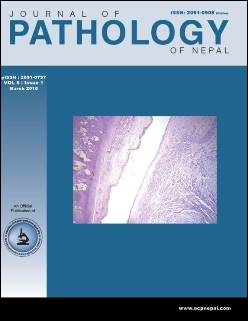Microvessel density in Prostatic Lesions : Relevance to prognosis
DOI:
https://doi.org/10.3126/jpn.v6i11.15647Keywords:
Angiogenesis, Microvessel density, Prostate, Prostatic Carcinoma, Gleason’s ScoreAbstract
Background: Angiogenesis is required for growth and metastasis of tumor tissue. Quantization of angiogenesis by calculating the microvessel density can be done in histopathology specimens with the help of immunochemistry. In this study we used anti CD 34 antibody to highlight the endothelial cells and thus calculate microvessel density. Most studies have shown a positive correlation of microvessel density with increasing pathological grade and have also shown microvessel density as an independent predictor of cancer progression and survival. The present study was to find out the microvessel density in benign and malignant lesions of prostate and also to correlate the vascularity with increasing grade of cancer.
Materials and methods: Sixty five prostatic biopsies were evaluated for microvessel density using CD34 monoclonal antibody. Comparison was done between BPH and Carcinoma Prostate. MVD was correlated with Gleason’s score, weight of specimen and increasing age of patient. Effect of prostatitis on Microvessel density was studied.
Results: Microvessel density was significantly higher in carcinoma prostate than in Benign Prostatic Hyperplasia. There was positive correlation of Microvessel density with increasing Gleason’s score. Microvessel was significantly increased in patients having symptoms for more than a year and also with biopsies revealing prostatitis. However, there was no significant correlation between Microvessel density and weight of specimen or increasing age.
Conclusion: Since Microvessel density was found to be significantly higher in Prostatic Carcinoma and it showed positive correlation with Gleason’s score it can be added as one of the indicators for predicting the disease outcome.
Downloads
Downloads
Published
How to Cite
Issue
Section
License
This license enables reusers to distribute, remix, adapt, and build upon the material in any medium or format, so long as attribution is given to the creator. The license allows for commercial use.




